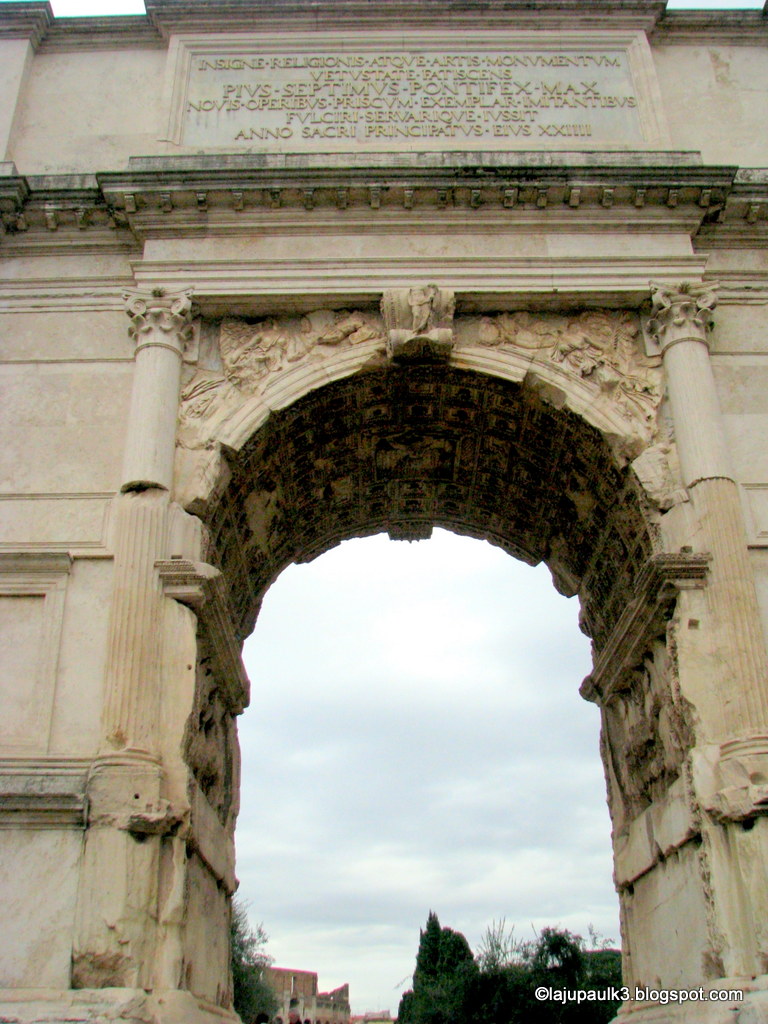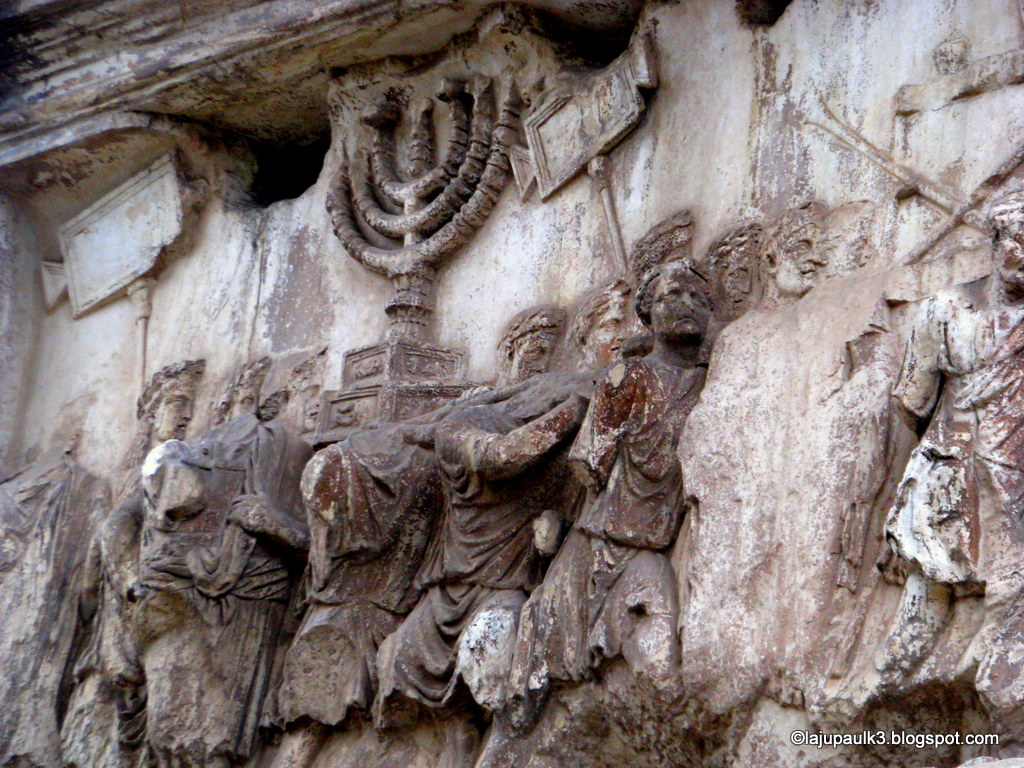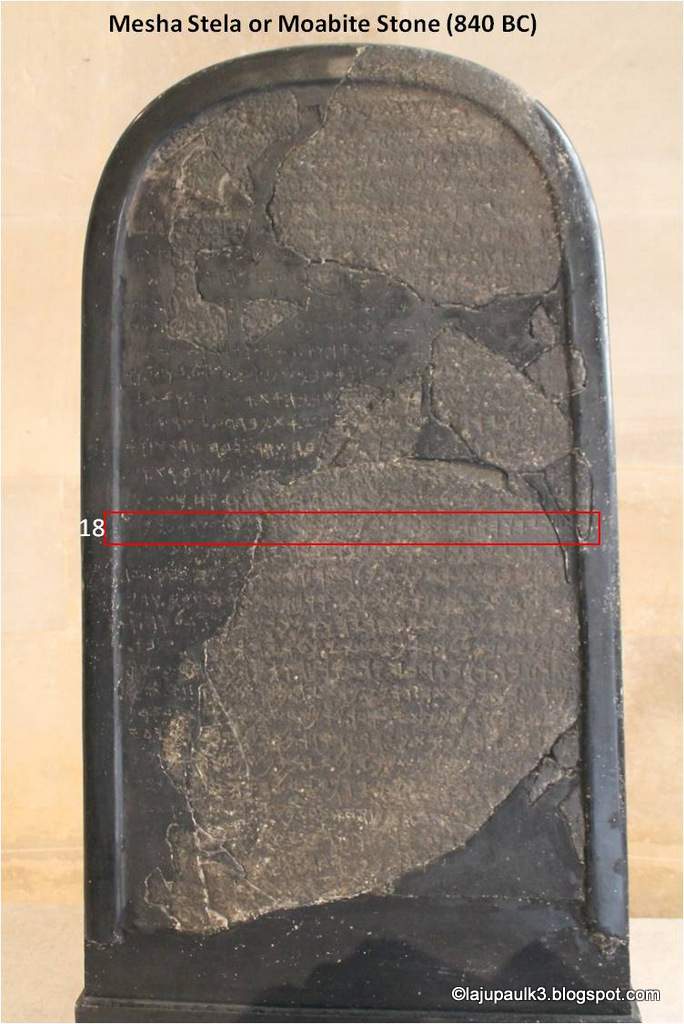Experience the most vibrant,amazing yet unpredictable strip of land on earth.
Monday, December 24, 2012
Friday, November 30, 2012
Monday, October 29, 2012
THE 'ARCH OF TITUS' (81 AD), ROME-its Biblical Significance.
The ‘Arch of Titus’ was built in 81 AD by the Roman Emperor Domitian Caesar to commemorate his elder brother Titus Caesar's victories. The monumental arch is 15.4 meters tall, 13.5 meters wide, and 4.75 meters deep, and has three internal panels. The architectural style of the arch is called ‘composite order’. The arch has served as a general model for many of the triumphal arches erected around the world, including the 1806 ‘Arc de Triomphe’ in Paris and the 1931 ‘India Gate’ of New Delhi.
However, the structure’s biblical significance lies with its association to the siege of Jerusalem (70 AD) that marked the beginning of Jewish Diaspora. The event has been symbolically represented with Titus’ triumphal entry into Jerusalem in one of the three panel reliefs of the arch (the other two show Titus’ triumphal ride on a chariot, and his deification). The panel depicts the spoils taken from the ‘Jerusalem Temple’ after it was destroyed by the Roman army under the command of Titus in the first century AD. Many Jews refuse to walk under the Arch of Titus for this reason. However, in 1948 when modern state of Israel was established, the Jews of Rome walked under the arch, but in the opposite direction from that of the conquering Roman army entered the city to symbolize the return of Jews to Jerusalem.
The relief represents Roman soldiers crowned with laurels, carrying the spoils of the Temple of Jerusalem, which are identified as:
1) The two stone law tablets fastened on staffs (the ten commandments of Moses)
2) The golden seven-branched candlestick (menorah)
3) The golden ‘table of showbread’
4) The sacred silver trumpets of Jerusalem Temple.
The first century Jewish historian Flavius Josephus recorded Jerusalem Temple’s sacred treasures, including the menorah being brought to Rome during the triumph of Titus. The current whereabouts of these sacred objects are unknown. There are several interesting legends and conspiracy theories surrounding their current locations. One such candidate is Vatican itself, where some secret chambers are said to secretly hold these sacred treasures. There are even reports about senior Israeli officials, Rabbis and even former Israeli President Moshe Katzav demanding the Pope to return the menorah to Israel!
Until 2009, when the ruins of a synagogue from the Second Temple period (50 BC-100 AD) were discovered in Magdala in Israel, the Arch of Titus preserved the earliest representation of the menorah of the Jerusalem Temple. The menorah depicted on the Arch of Titus served as the model for the menorah used on the official emblem of the modern state of Israel.
A recent study (The Arch of Titus Restoration Project) undertaken by the New York based Yeshiva University using advanced scanning and spectrometric methods has revealed that the menorah on the Arch of Titus was originally painted in a rich golden yellow colour and the current image faded to the color of its underlying stone long ago. The Bible records the menorah as being made of pure solid gold, and no wonder it was painted in bright yellow in the Arch of Titus that would have looked like gold from far away (see more here).
A recent study (The Arch of Titus Restoration Project) undertaken by the New York based Yeshiva University using advanced scanning and spectrometric methods has revealed that the menorah on the Arch of Titus was originally painted in a rich golden yellow colour and the current image faded to the color of its underlying stone long ago. The Bible records the menorah as being made of pure solid gold, and no wonder it was painted in bright yellow in the Arch of Titus that would have looked like gold from far away (see more here).
31 And thou shalt make a candlestick of pure gold: of beaten work shall the candlestick be made: his shaft, and his branches, his bowls, his knops, and his flowers, shall be of the same.
32 And six branches shall come out of the sides of it; three branches of the candlestick out of the one side, and three branches of the candlestick out of the other side:
33 Three bowls made like unto almonds, with a knop and a flower in one branch; and three bowls made like almonds in the other branch, with a knop and a flower: so in the six branches that come out of the candlestick.
34 And in the candlesticks shall be four bowls made like unto almonds, with their knops and their flowers.
35 And there shall be a knop under two branches of the same, and a knop under two branches of the same, and a knop under two branches of the same, according to the six branches that proceed out of the candlestick.
36 Their knops and their branches shall be of the same: all it shall be one beaten work of pure gold.
37 And thou shalt make the seven lamps thereof: and they shall light the lamps thereof, that they may give light over against it.
38 And the tongs thereof, and the snuffdishes thereof, shall be of pure gold.
39 Of a talent of pure gold shall he make it, with all these vessels.
40 And look that thou make them after their pattern, which was shewed thee in the mount.
(Exodus 25:31-40).
Saturday, September 22, 2012
Saturday, August 25, 2012
The Code of Hammurabi (1772 BC)-one of the earliest code of laws discovered. Displayed in the Louvre Museum of Paris, France.
One of the oldest deciphered writings of
significant length, the Code of Hammurabi is the longest surviving legal text
from the Old Babylonian period. Although Hammurabi's Code is not the oldest
code of laws in the world, it is the best preserved legal document from the ancient
Near East. The code was issued by Hammurabi, the 6th King of ancient
Babylon who ruled for 42 years from 1792 to 1750 BC. The almost complete code
survives today on a 7.4 ft tall shining black diorite stele in the shape of a
huge index finger. A total 282 laws, carved in 49 columns and 28 paragraphs in ancient
Akkadian language, the code deals mainly on civil, criminal, and family matters
of the Babylonian society. The stele was
discovered from ancient Susa, Elam (modern Khūzestān in Iran) by French archaeologists
in 1901 and currently on display in the Louvre Museum of Paris, France. Here is
a link to an English translation of the complete Hammurabi Code.
The discovery of the Hammurabi Code is important for
Biblical studies as it supports the authenticity of the Law of Moses. The
similarities between the Code of Hammurabi and the Law of Moses are so much,
some even hypothesize that Hammurabi influenced Moses while writing the Torah. The closest parallel comes
in the common wording of "eye for an eye" and "tooth for a
tooth" (Hammurabi Code 196, 197, 200 and Exodus 21:23-25). Although there
are certainly similarities, there are also many differences. Mosaic Law is based
in the worship of one God and involves spiritual principles, whereas Hammurabi
Code is mainly civil and criminal. The Hammurabi Code written at least three
centuries before Moses (1500-1400 BC) is also an answer for Bible critics who believed
that Moses could not have written the first five books of the Old Testament
because the art of writing was not developed until well after his death.
Monday, July 16, 2012
"Mesha Stele" or "Moabite Stone" (9th Century BC), Louvre Museum, Paris. Considered as one of the oldest inscription where the sacred name "Yahweh" (YHWH) is used in written form. The name 'Israel' is mentioned 6 times in this stele from 840 BC.
"The Mesha Stele" or the "Moabite Stone" was by erected by the Biblical King "Mesha", king of Moab, at Dhiban (in modern Jordan) around 840 BC. Scribbled on a three feet tall black basalt rock in Moabite language (very similar to ancient Hebrew), the 34-lined Mesha Stele is one of the longest monumental inscriptions ever found from Israel-Palestine region.
"And Mesha king of Moab was a sheepmaster, and rendered unto the king of Israel an hundred thousand lambs, and an hundred thousand rams, with the wool.But it came to pass, when Ahab was dead, that the king of Moab rebelled against the king of Israel"( 2 Kings 3:4-5).
Mesha stele is an important discovery in the field of Biblical archaeology due to a couple of reasons. It is the first non-biblical text (and one of the oldest too) or inscription found in modern times using “Yahweh” (YHWH, or Jehovah), as a name for the God of Israel. The name “Israel” is mentioned six times on the stele. It also names Israel’s sixth king Omri and refers to his sons as well. Some identify the stele containing the earliest mention of the "House of David". In addition, the stone validates many places mentioned in the Bible.
The stele was discovered in 1868, in Dhiban (biblical Dibon) by the German missionary F.A. Klein.In 1873,the local Bedouins smashed the stone into pieces, assuming that it contained a treasure after they saw the great interest it aroused among Europeans. They broke the stele into several fragments, burned it and poured water on it. How unfortunate it is after surviving nature's harshness for about 2500 years, this historic inscription meets such a tragic fate in greedy human hands.
Luckily, with the help of an impression of the Stone made by a young Frenchman named Charles Clermont-Ganneau before it was broken, archaeologists were able to reconstruct about two-thirds of the texts inscribed on the stone (613 of the estimated 1000 letters). Around 60 fragments were recovered (38 purchased by Clermont-Ganneau himself) and the stele was reconstructed in Paris. Since 1875, it has been displayed in Louvre Museum, paris.
In the 18th line of the inscription appear the Sacred name, "Yahweh" and the word "Israel". Look for the words in the enlarged snap.
Mesha stele is an important discovery in the field of Biblical archaeology due to a couple of reasons. It is the first non-biblical text (and one of the oldest too) or inscription found in modern times using “Yahweh” (YHWH, or Jehovah), as a name for the God of Israel. The name “Israel” is mentioned six times on the stele. It also names Israel’s sixth king Omri and refers to his sons as well. Some identify the stele containing the earliest mention of the "House of David". In addition, the stone validates many places mentioned in the Bible.
The stele was discovered in 1868, in Dhiban (biblical Dibon) by the German missionary F.A. Klein.In 1873,the local Bedouins smashed the stone into pieces, assuming that it contained a treasure after they saw the great interest it aroused among Europeans. They broke the stele into several fragments, burned it and poured water on it. How unfortunate it is after surviving nature's harshness for about 2500 years, this historic inscription meets such a tragic fate in greedy human hands.
Luckily, with the help of an impression of the Stone made by a young Frenchman named Charles Clermont-Ganneau before it was broken, archaeologists were able to reconstruct about two-thirds of the texts inscribed on the stone (613 of the estimated 1000 letters). Around 60 fragments were recovered (38 purchased by Clermont-Ganneau himself) and the stele was reconstructed in Paris. Since 1875, it has been displayed in Louvre Museum, paris.
In the 18th line of the inscription appear the Sacred name, "Yahweh" and the word "Israel". Look for the words in the enlarged snap.
Saturday, June 16, 2012
Friday, May 18, 2012
Saturday, April 21, 2012
Subscribe to:
Comments (Atom)




















































